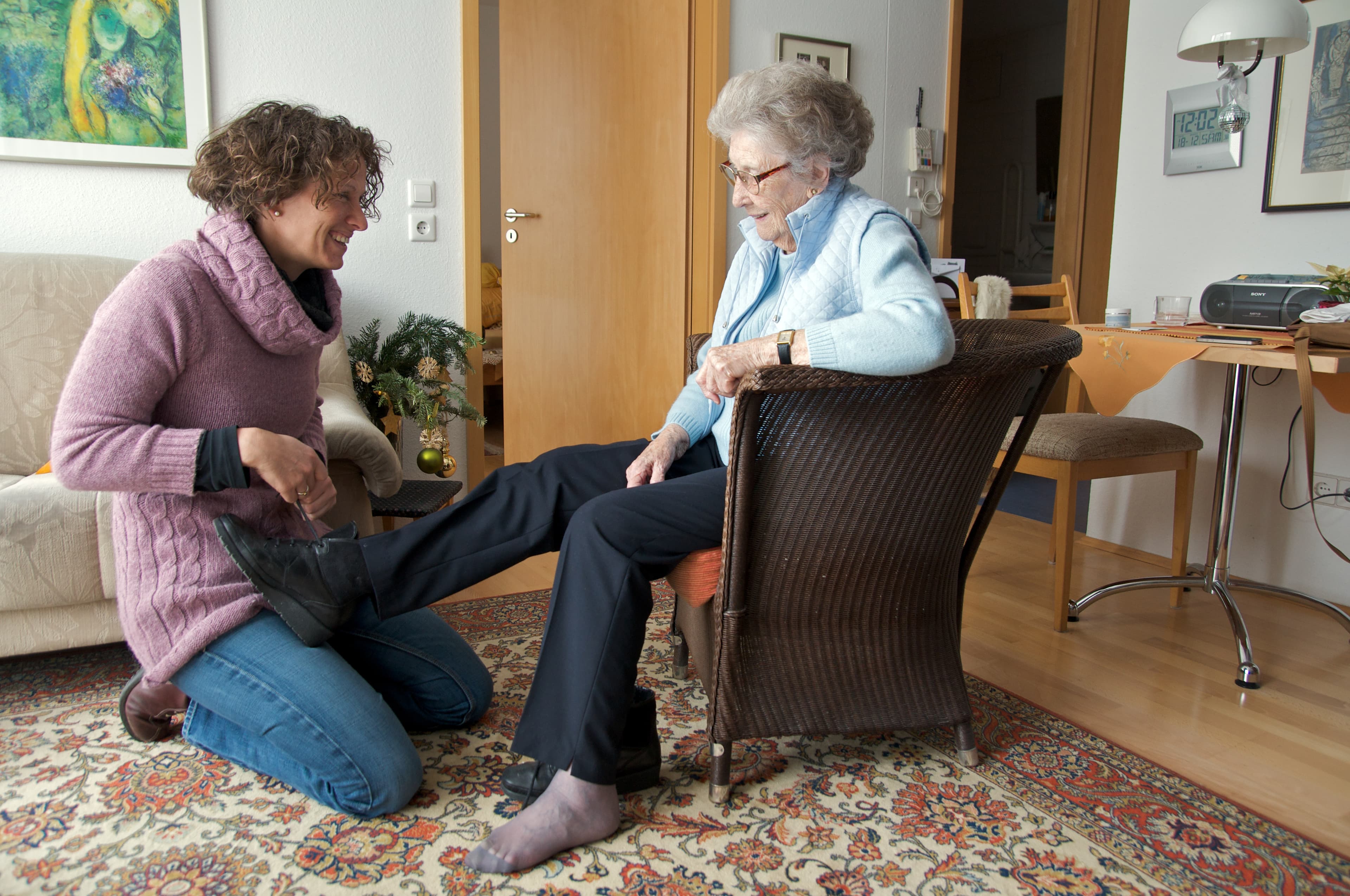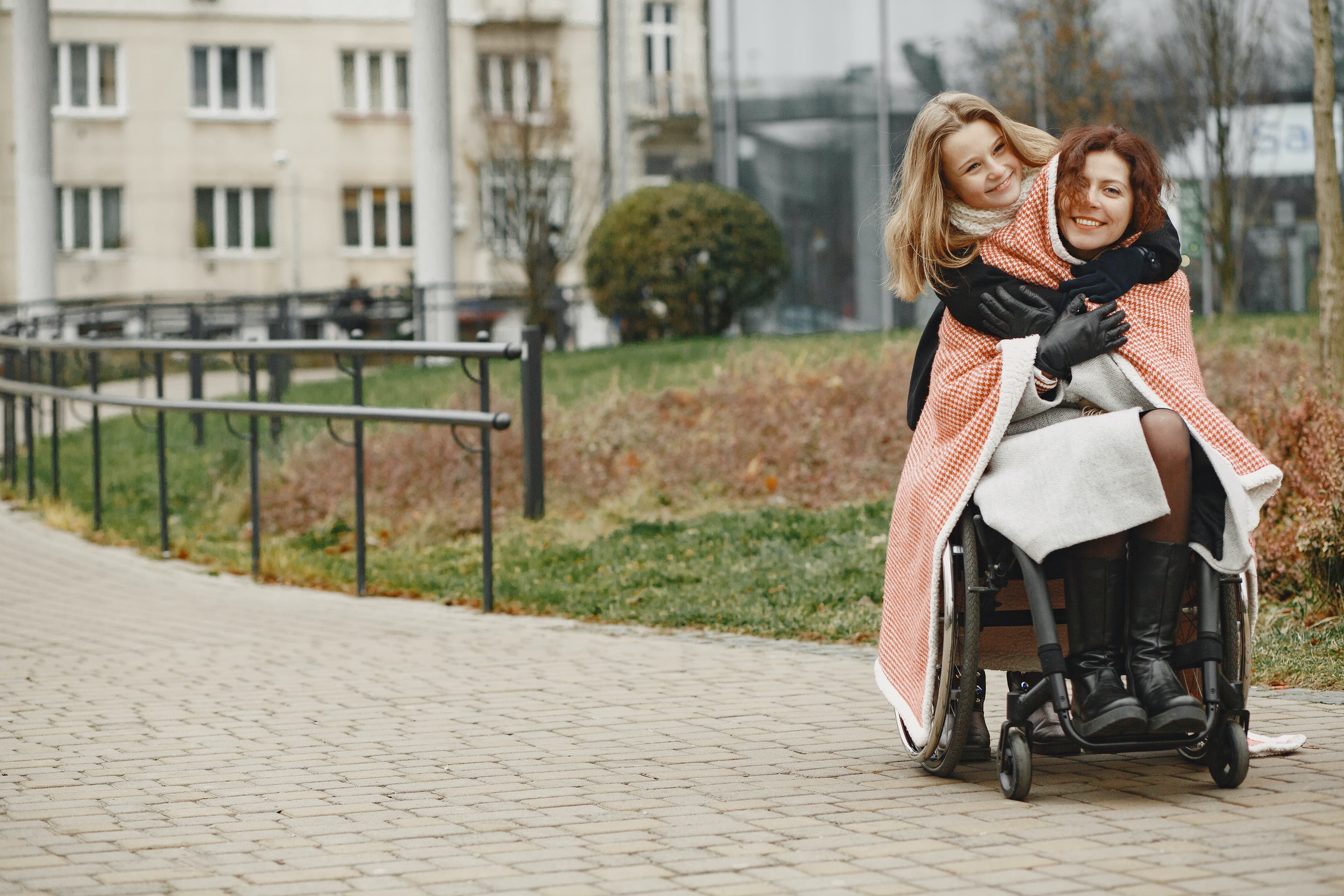The right adaptive clothing can greatly improve a caregiver's life by increasing comfort, enhancing independence, and boosting the quality of life for their loved ones. In this buying guide, we will discuss how to choose the ideal adaptive apparel, giving you the ability to select products that promote self-dressing, makes it simpler for those caring for someone who needs help getting dressed, and make daily routines easier for both the caregiver and the person receiving care.
How Do I Know if Adaptive Apparel Is Right for Me?
Before exploring adaptive clothing options, it's important to determine if it's the right choice for your caregiving situation. Begin by considering the specific needs and challenges of your loved one.
Common reasons loved ones may need adaptive apparel include:
• Limited Mobility: Those who have difficulty moving or who are wheelchair users may have a harder time getting dressed. Adaptive apparel, with open-back styles, magnetic closures, and other adaptive designs, help reduce the need for excessive movement when putting on clothes.
• Arthritis: People with arthritis might find it difficult to use their hands for tasks like fastening buttons or zippers due to limited dexterity. Adaptive clothing with simple touch closures (similar to hook and loop closures, like on footwear or bags) removes the need for intricate movements.
• Incontinence Management: Adaptive apparel made for managing incontinence has discreet elements such as waterproof layers and absorbent materials. These garments are simple to take off and put on again, offering comfort, respect, and convenience to the person wearing them.
What kinds of adaptive apparel are right for me?
Our adaptive clothing offers a variety of sub-categories, each designed to meet the unique needs and preferences of your loved one.
Let's take a closer look at some of these sub-categories to gain a better understanding of how to select the right adaptive clothing:
1. Non-Slip Socks & Slippers: These provide enhanced traction and stability, reducing the risk of slips and falls.
2. Recovery Wear: Ideal for individuals who have undergone surgery or medical procedures, recovery wear offers soft fabrics and comfortable clothing options that promote healing and mobility.
3. Adaptive Pajamas & Gowns: Designed for ease of dressing and undressing, adaptive pajamas and gowns feature open-back or side-open designs.
4. Pants: Adaptive pants are available in various styles, including elastic waistbands, side open with zippers, and magnetic closures.
5. Tops: Our adaptive tops have open-back designs, magnetic closures, or easy-touch closures for effortless dressing and undressing.
Products for Specific Needs:
Within each of the above sub-categories, there are options that are custom tailored to more specific needs.
As an example:
Diabetes-Friendly Adaptive Apparel: Clothing designed with features like discreet pockets for insulin pumps or easy-access openings for blood glucose monitoring is diabetes-friendly and offers convenience and practicality.
Compression socks offer many advantages for individuals with different conditions, including diabetes. According to experts, these special socks are designed to gently apply pressure to the lower legs, which helps enhance blood circulation and decrease swelling.
Here's how compression socks can aid individuals with diabetes:
1. Improved Blood Circulation: Compression socks apply pressure to the legs in a graduated manner (meaning pressure starts at the ankle and gradually decreases in pressure further up the leg,) compressing the veins and muscles. This compression aids in pushing blood upwards, improving circulation, and reducing the pooling of blood in the lower extremities.
2. Reduced Swelling: People with diabetes often experience swelling in their feet and ankles. Compression socks can effectively reduce this swelling by preventing fluid buildup and helping to remove excess fluids from tissues, providing support and relief.
3. Prevention of Complications: Diabetes increases the risk of developing conditions like peripheral arterial disease and deep vein thrombosis. Compression socks can help mitigate these risks by promoting healthy blood flow.
4. Enhanced Comfort and Reduced Fatigue: Diabetes-related foot discomfort, including aching, fatigue, and cramping, can significantly impact one's quality of life. Compression socks provide gentle support and cushioning, reducing fatigue and discomfort.
5. Aid in Exercise and Recovery: Regular physical activity is vital for managing diabetes. Compression socks can enhance exercise performance by improving blood circulation, reducing muscle fatigue, and preventing cramping.
Most Important Features:
When selecting adaptive clothing, consider the following features and benefits:
1. Magnetic Closures on Adaptive Pants and Shirts: Convenient and easy to use, magnetic closures eliminate the need for buttons or zippers.
2. Easy Touch Closures: These hook and loop style fasteners are perfect for individuals with limited dexterity, as they require minimal effort to open and close.
3. Open-Back Tops: Open-back designs allow for easy dressing and minimize discomfort for individuals with mobility challenges.
4. Side-Open Pants with Zippers: Side-open pants with zippers enable easy access for personal care and dressing assistance.
5. Elastic Waist Pants: Elastic waistbands offer flexibility and ensure a comfortable fit for people with different waist sizes.
6. Anti-Strip Jumpsuits: Designed for individuals prone to disrobing, anti-strip jumpsuits feature secure closures to prevent unwanted undressing.
7. Incontinence Clothing: These garments feature discreet and absorbent materials, providing dignity and comfort for individuals managing incontinence.
FAQs:
Q: What makes adaptive apparel different from regular clothing?
A: Adaptive apparel is specially designed for the unique needs of individuals with mobility challenges, lower dexterity, or particular conditions. Features like easy closures, open-back designs, and adaptive sizing all help the wearer stay more comfortable and promote independence
Q: How do I find the right size and fit for adaptive clothing?
A: To find the right size for adaptive clothing, it's essential to measure accurately. Follow the size charts provided by the manufacturer, which often include measurements for the chest, waist, hips, and inseam.
Q: Can adaptive apparel be fashionable and stylish?
A: Absolutely! Many brands now offer adaptive clothing that combines functionality with modern aesthetics. Caregivers can find adaptive clothing that allows their loved ones to express their personal style while meeting their unique needs.
Other products you may need:
If adaptive apparel is right for you, you may find these related products useful:
1. Bibs and Protective Clothing: These items provide protection against spills and stains, ensuring cleanliness during meals or other activities.
2. Reachers & Grabber Tools: These tools help individuals with limited reach or mobility to grasp and retrieve items without straining themselves.
3. Walkers & Rollators: For individuals who require mobility support, walkers and rollators offer stability and assistance when moving around.
4. Incontinence Supplies: Alongside adaptive clothing, incontinence supplies such as adult diapers, disposable pads, and waterproof bedding can aid in managing incontinence effectively.
Choosing the right product can be overwhelming - Carewell's here to help. If you need help finding the perfect product for your needs, talk to one of our caregiving specialists today. Call (800) 696-CARE. We’re here to support you!



